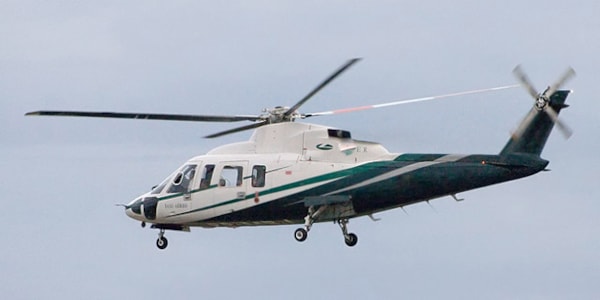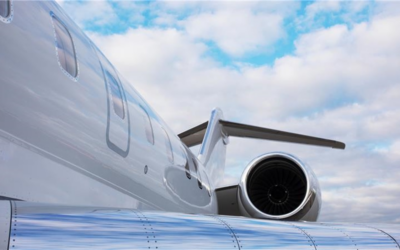FAA proposes revisions for helicopter radio altimeter 5G interference AD

The FAA has proposed to replace the Airworthiness Directive for helicopters equipped with a radio altimeter flying in areas impacted by 5G C-Band interference. The new notice of proposed rulemaking (NPRM) states that additional limitations are needed ahead of the continued deployment of 5G C-Band base stations, with signals covering most of the U.S.
The FAA proposed the changes to the previous AD was issued on Dec. 7, 2021 in response to the U.S. Federal Communications Commission (FCC) adopting final rules in March 2020 that authorized flexible use of 3.7-3.98 GHz band for newer services, like 5G. The new NPRM proposes a revision of the existing AD and incorporates new limitations that prohibit certain operations that require radio altimeter data. The FAA proposed the revision to address any potentially unsafe conditions for helicopters using these products.
The FAA invites relevant data, views, comments or arguments by May 12. All submitted comments will be considered and the FAA may amend the proposal in response if it sees fit.
The FAA feels the radio altimeter is not a reliable tool when faced with interference from wireless broadband operations. The AD requests a revision for any existing rotorcraft flight manual (RFM) to add in limitations, set by the FAA. The original AD was issued since anomalies in the radio altimeter often go undetected by the automation or the pilot. These irregularities most often go unnoticed close to the ground, which can result in a loss of continued safe flight and landing.
The same day the FAA proposed the initial AD, it issued an AD to correct the same unsafe condition and require similar limitations for all transport and commuter category planes with a radio altimeter. Since the initial AD was proposed, the FAA has reviewed data from alternative method of compliance (AMOC) requests to demonstrate that the radio altimeters can be used for the intended purpose when operating outside of a protection radius around the 5G C-Band transmitters.
The AMOC process gave the FAA more accurate insight into how 5G transmissions can impact flight operations. During the initial analysis, the FAA sought to protect against interference during critical operations when a pilot relies on radio altimeters. The FAA hoped to prohibit operations within these vicinities, known as 5G C-Band emitters. With a new understanding of the interference and potential risk, the FAA has reduced the protected areas around the 5G C-Band emitters, protecting rotorcraft.
Since the second AD applied to transport and commuter category planes, comments given gave the FAA a broader range of ideas for most of the radio altimeters on the market, for helicopters and other types of aircraft. The FAA now has a better understanding of how specific radio altimeters can react to interference and perform in protected radiuses, subsequently proposing to retain existing prohibitions in the initial AD with an option to upgrade to a different, more tolerant radio altimeter rotorcraft to avoid the limitations.
RELATED STORIES:
FAA issues exemption for helicopter air ambulances from 5G restrictions
FAA airworthiness directive on 5G interference ‘falls short’, NBAA responds with aviation coalition
FAA gives 5G deployment updates
The FAA has done extensive collaborative work with 5G operators like AT&T and Verizon, as well as the government and FCC. As 5G expands across the country, so does the work being done to prevent possible interference and safety concerns. Safety zones are tailored to where critical phases of flight take place.
The measures being taken, like the revised AD, are being pushed out ahead of the continued deployment of 5G C-Band services. As more 5G C-Band base stations pop up near airports in the national airspace system (NAS), the FAA will continue to monitor the impact. The use of 5G services will continue to roll out across the country and the FAA and other aviation organizations will continue to ensure that aviation operations can run smoothly and safely, without interference causing concern.
Contact
Name: Haley Davoren
, Digital Content Manager
Company: GlobalAir.com
Website: https://globalair.com
Email: [email protected]
Phone: 502-456-3934
©2023 GlobalAir.com, Haley Davoren. All rights reserved.
Recent Posts
- The Ownership Equation: Buy the Jet or Buy the Share?
- President Trump and DOT announce plans to upgrade D.C. airport
- Report finds 84% drop in corporate jet travel out of Austin as global traffic climbs
- Atlantic Aviation expands to the Caribbean with new location
- Static display to be given new location and updated layout at EBACE 2026







Recent Comments